My interest in people's relationship with live music pushed me to design a mobile iOS prototype that helps users plan their live music experiences around them. Secondary research provided a foundation to begin probing fans of live music in my interviews. I wanted to know how these people interacted with live music, and during this process I learned about their experiences, motivations, behaviours, and frustrations with the scene. Smaller venues with friends was theme, but getting to that point was the challenge as users found the planning process difficult. Take a browse through my process, and feel free to let me know what you think!
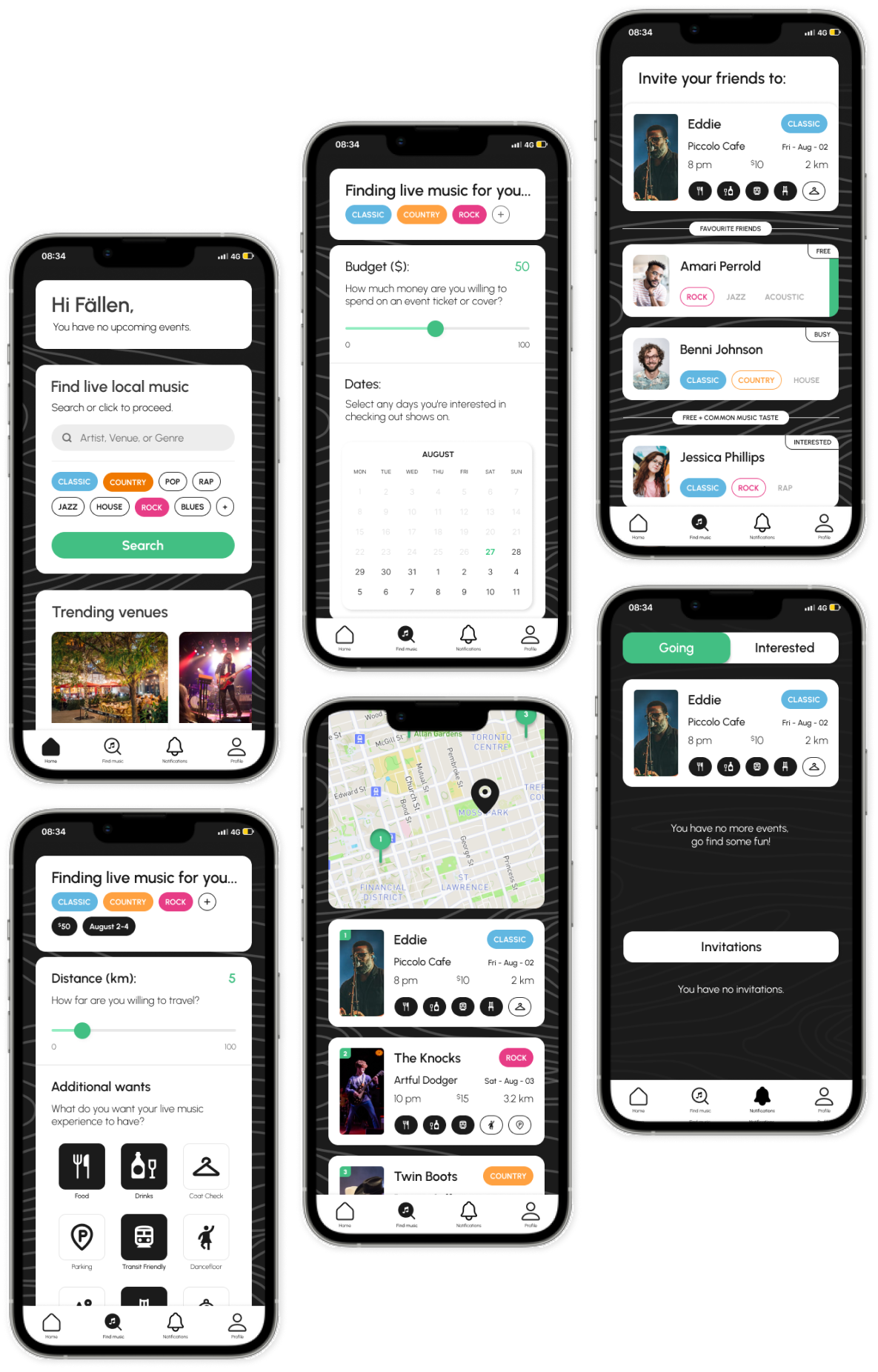
"More than 80% of Canadians planned on attending live music events at the end of 2020."
"64% of respondents stated that attending live music events boosts their mental health."
20 minutes of live music results in a 21% increase in feelings of wellbeing.
The price of a ticket has increased 26% from pre-pandemic levels - $96 in 2016 to $121 in 2022.
"Planning to see live music takes a lot of work"
"It's challenging to know when and where events are taking place"
"I wouldn't say I'm up to date on events happening within my community"
"Gathering people interested in similar music takes effort"
"Better resources to enjoy music and be part of that community"
"Smaller venues feel intimate and I feel more connected to the artist"
"Smaller venues and shows of lesser known artists because they're less expensive"
"Being able to get as close as you want to the artist is really cool"
"It's nice to gather with people who like to listen to the same kind of music"
"Unique and memorable experiences"
"I look for a website where you can see a map of the area and prices"
"Discovered a group I now like by watching them for the first time live"
"Use social media or google to see if anything pops-up for live music near me"
"A lot of plans fall through because our organization is bad"
"I learned about the event through online ads and friends"
"I hang out with my friends when our schedules align"
My participants understand live music in smaller venues is less expensive and believe they also offer better experiences.
Time consuming, unorganized and stressful explained my participants' live music planning experiences.
Large crowds can be stressful compared to the personalized experience of live music in an intimate setting.
How might we provide 25-35 year old Canadians with better planning resources so that they can access more live music experiences locally.
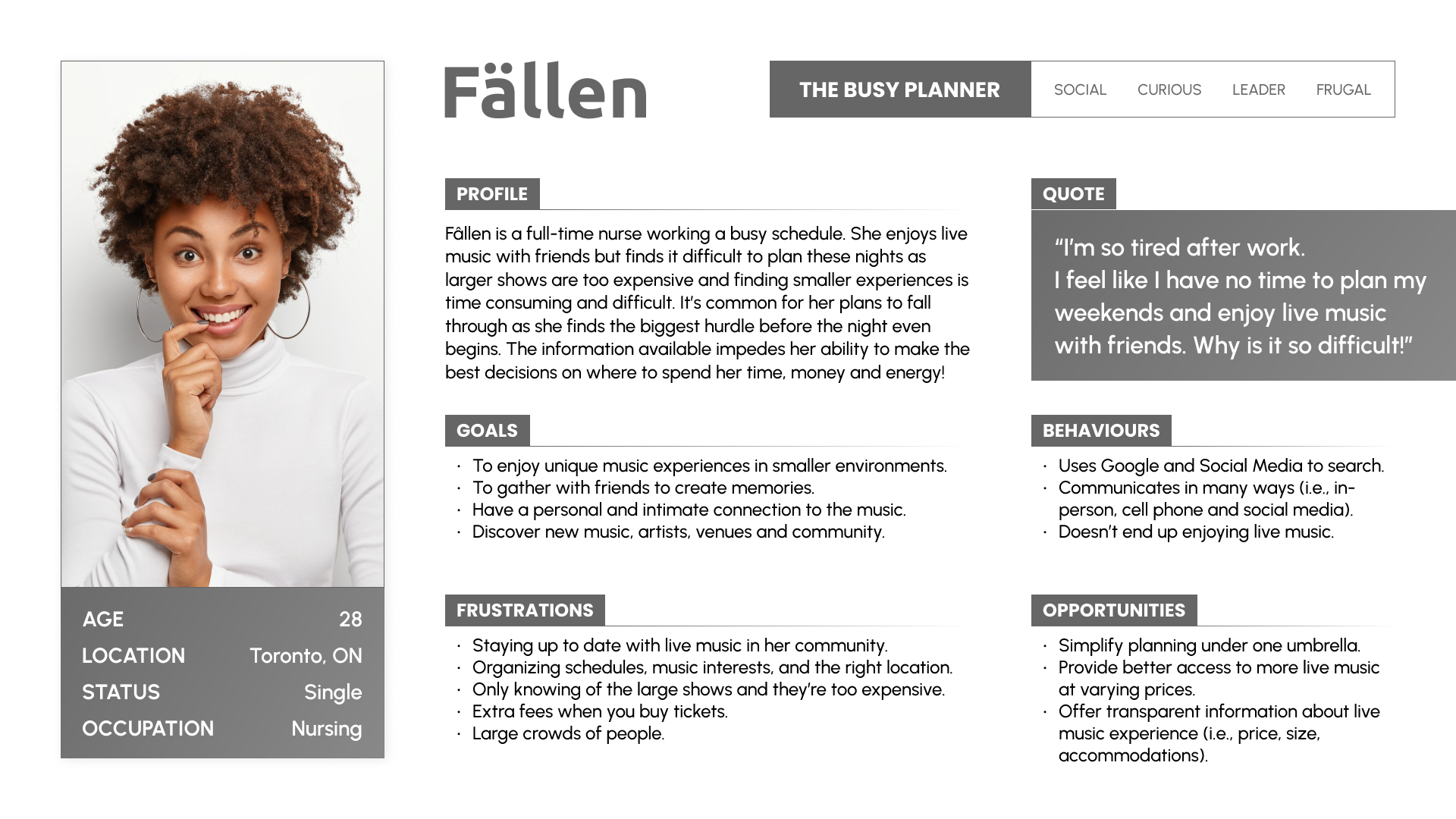
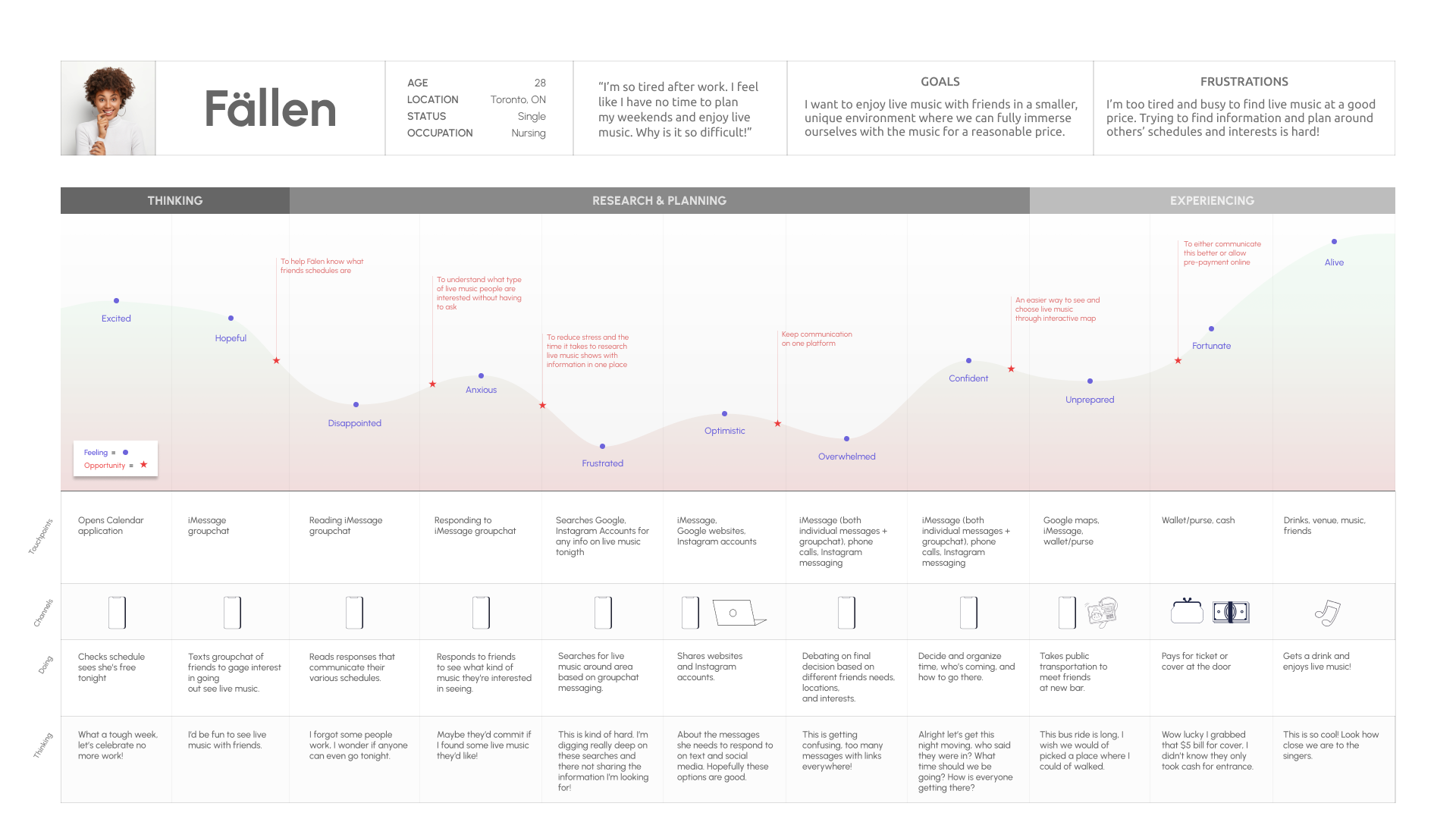
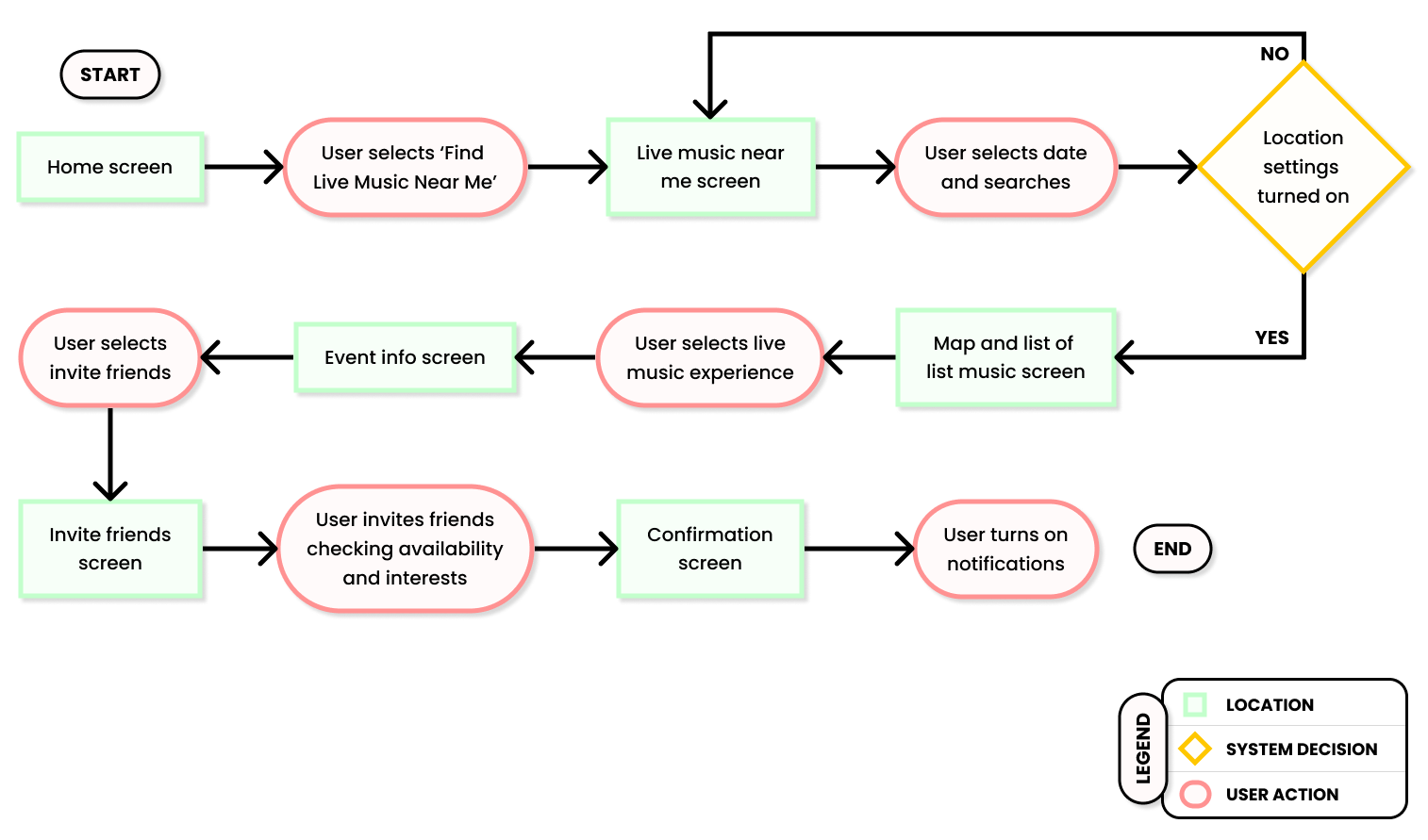
Drawing inspiration from creatives and well-made products in the industry was important to my process. Finding organized cards that separated information effectively was going to help the look and feel of my product.
I really enjoyed the process of pen and paper! The opportunity to get permanent thoughts and ideas on a physical space was fun. These six screens detail the process of finding live music.
.png)
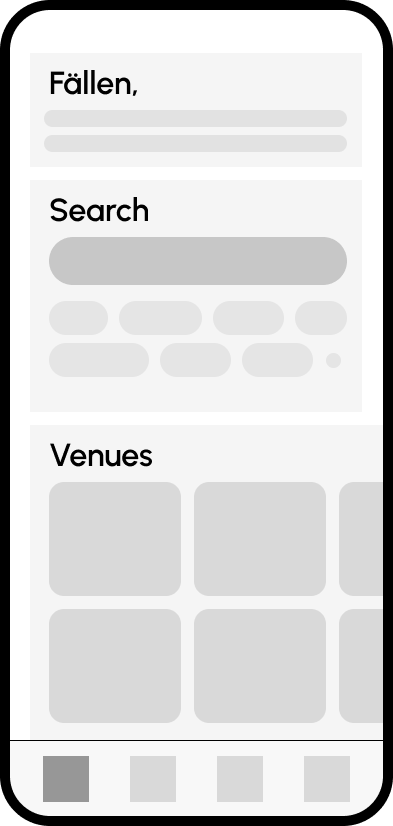
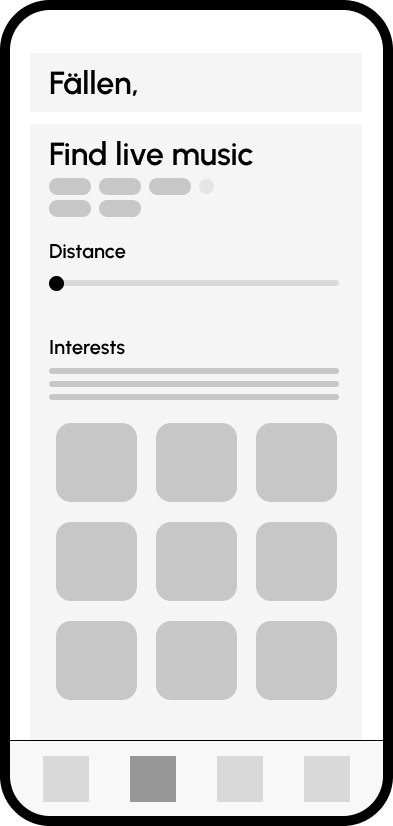
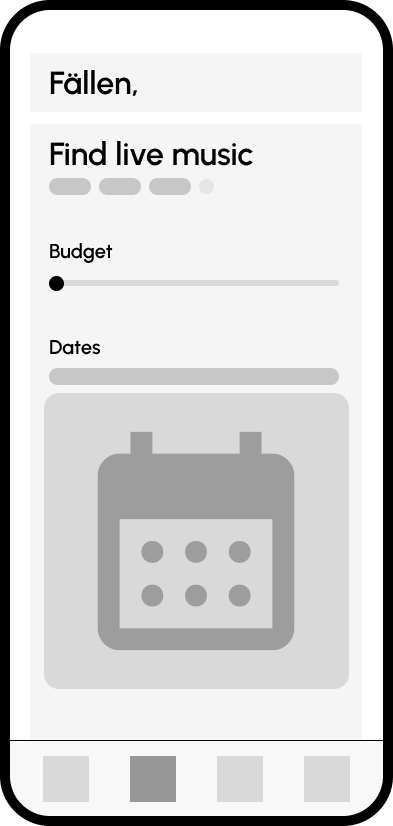
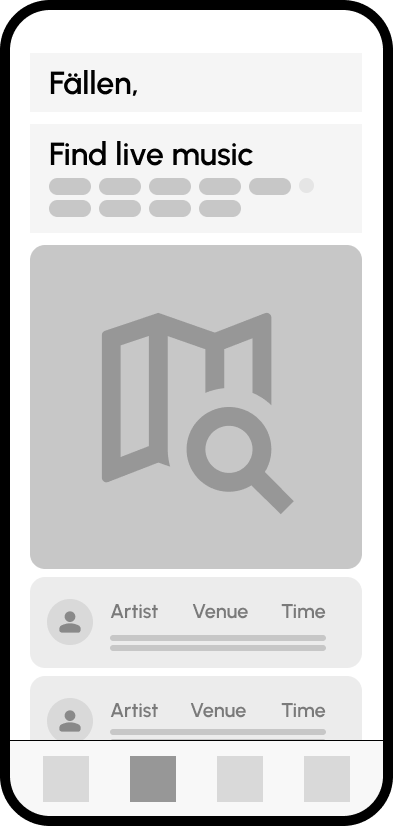
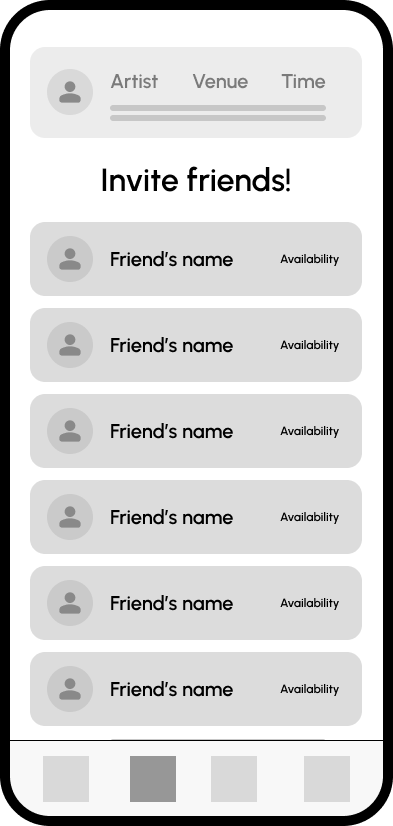
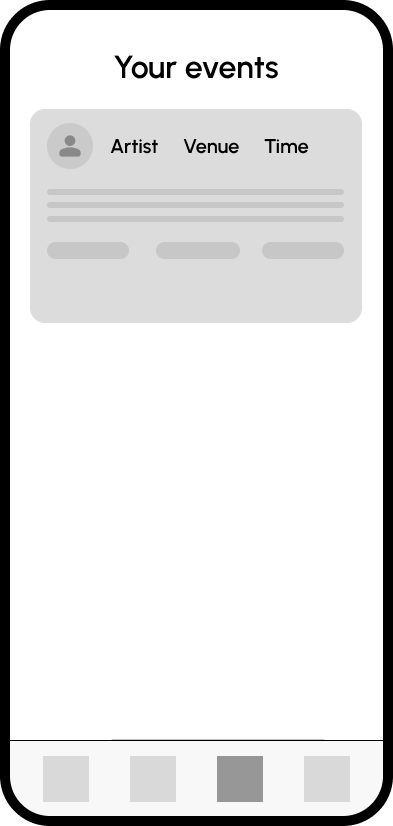

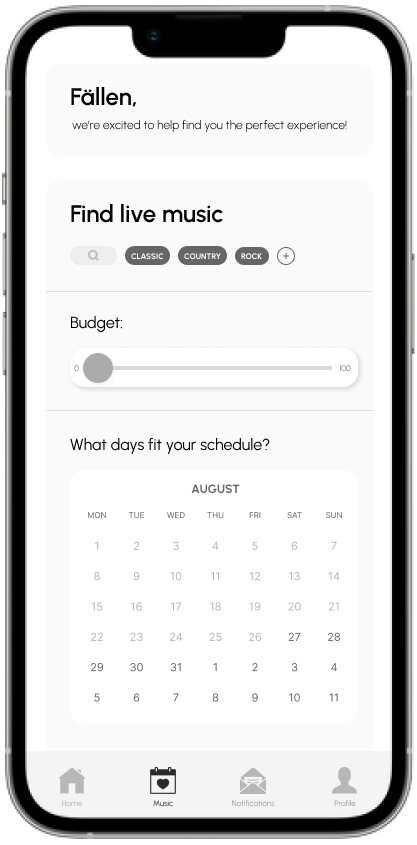
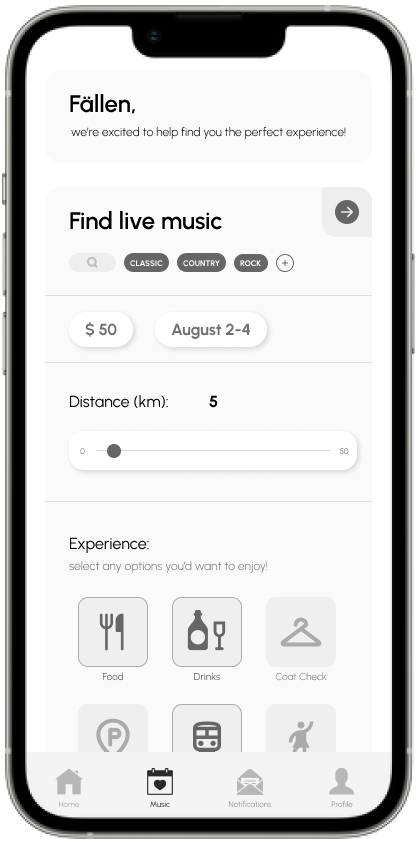
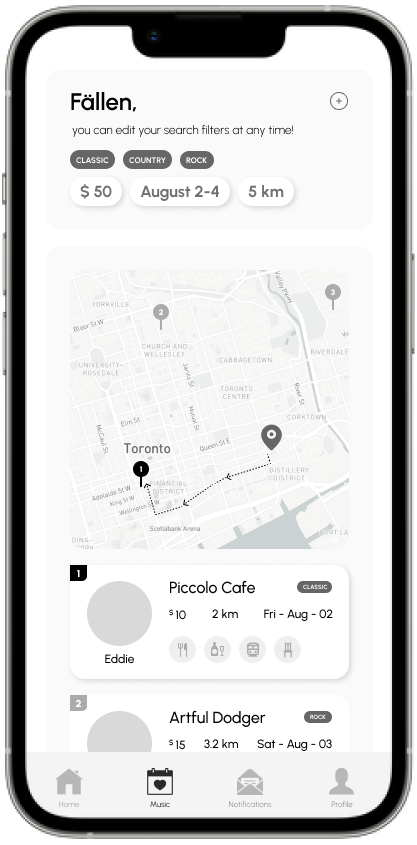
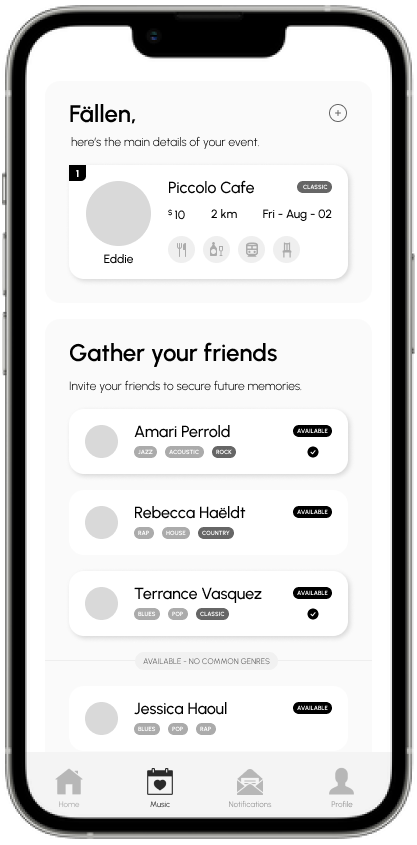
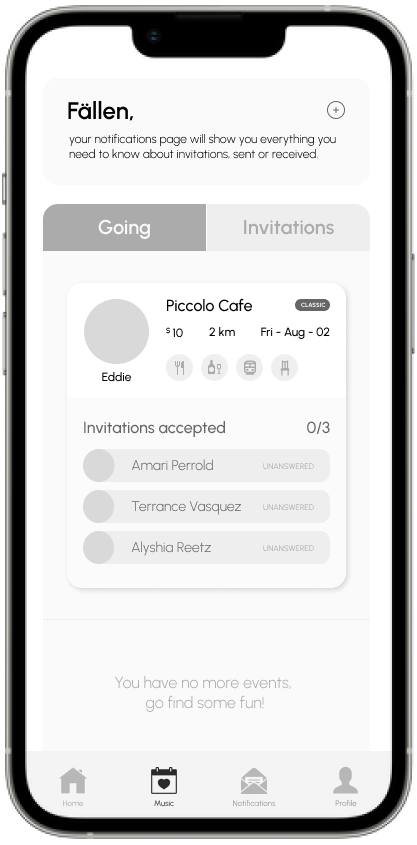
Simple, friendly and intentional copy will help communicate Local's purpose more effectively.
Emphasizing the top card is critical as it holds all of the user's search filters throughout their journey.
Improving the accessibility of my call-to-action button(s) so users can reach with thumb easily.
Improving the overall accessibility (size of font, cards and map).
I got back into Figma to answer some of the concerns and take another step towards a polished product. I wasn't able to fix every bug as time was a real constraint, but I noted everything and prioritized value to my Fällen!
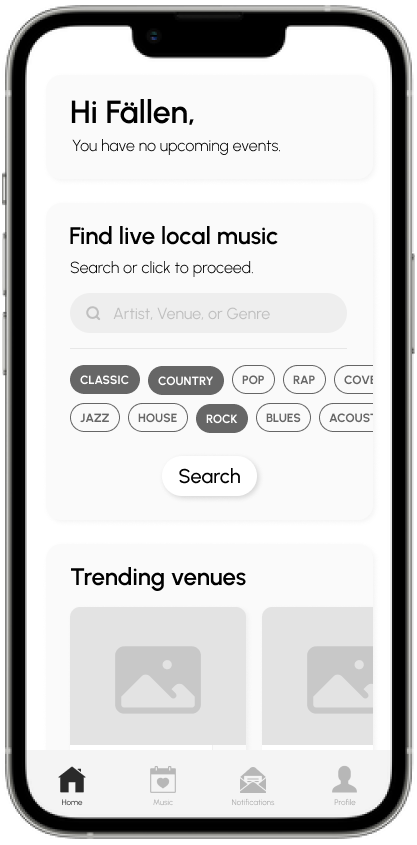
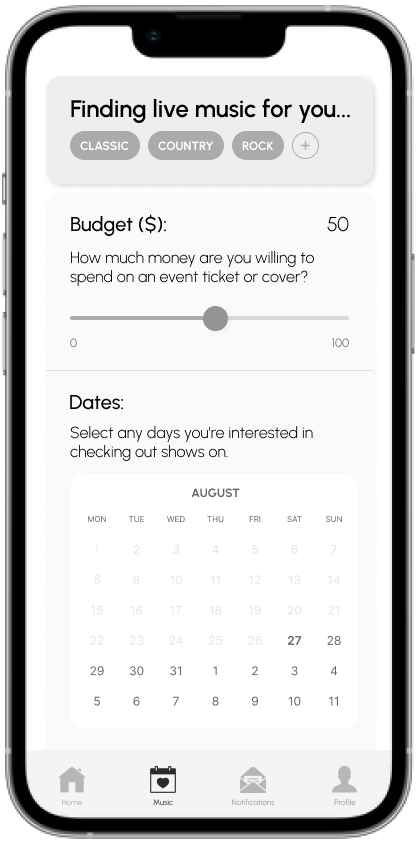
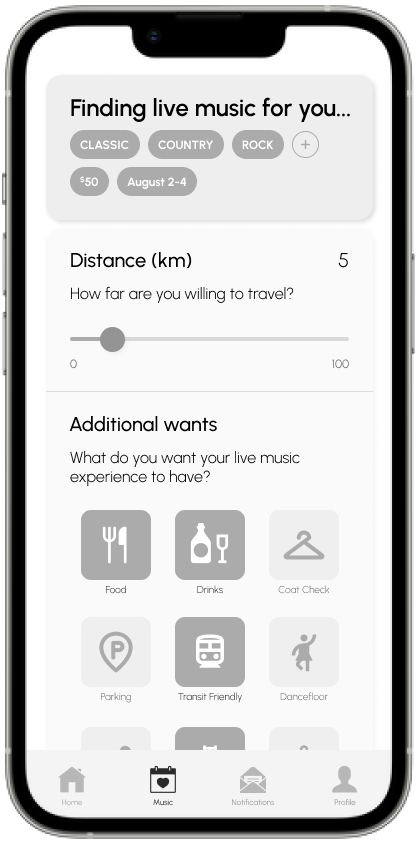
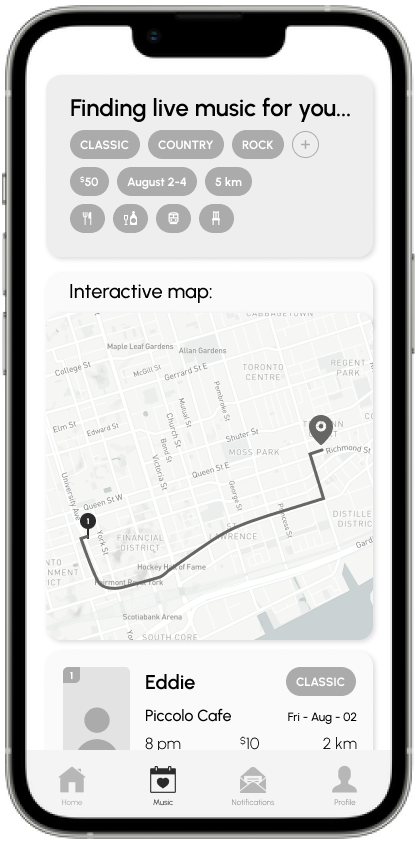
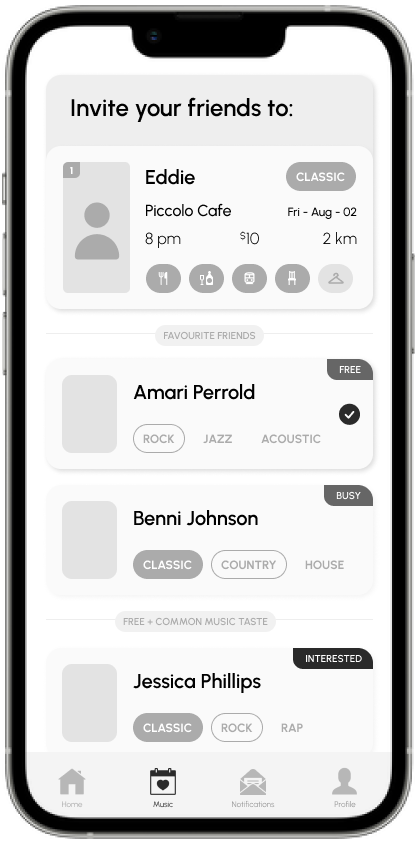
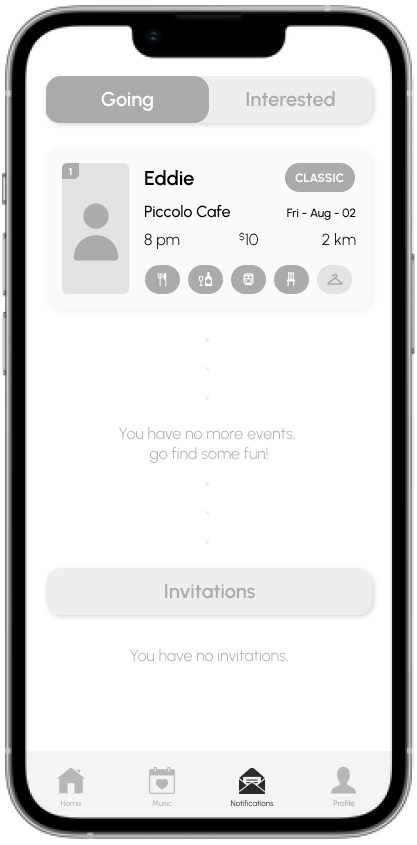
Simple but powerful. A sense of belonging, creating community right around the corner.
Definitions can vary, but some people have and others don’t. Hard to teach but extremely coveted!
A meaningful word that conveys more than just music, but a shared sense of pride.
Shining a light on human potential and the special moments created.

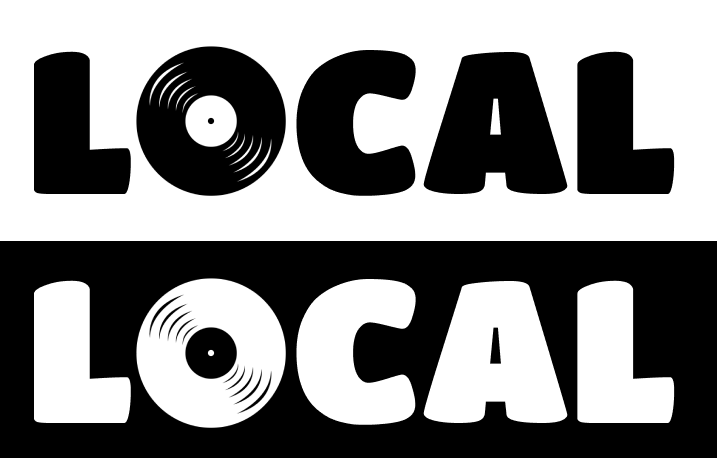
.png)
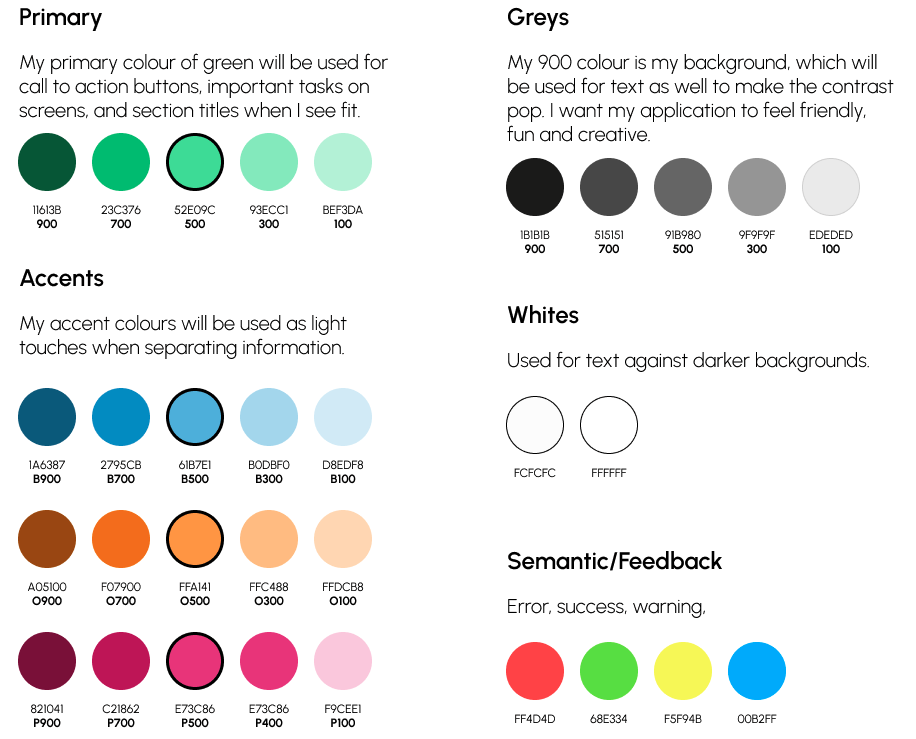
Urbanist proved itself worthy in my usability tests as it provided easy reading and feelings of organization.
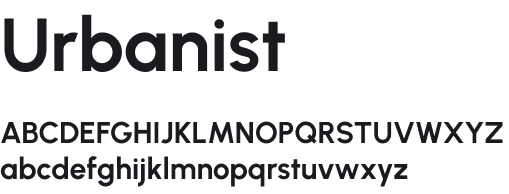
Perfection is a myth. I began my UX Design journey two weeks before I started this project and have pushed myself every day to become to surpass expectations. Local truly came to life with a dash of colour and delightful animations.

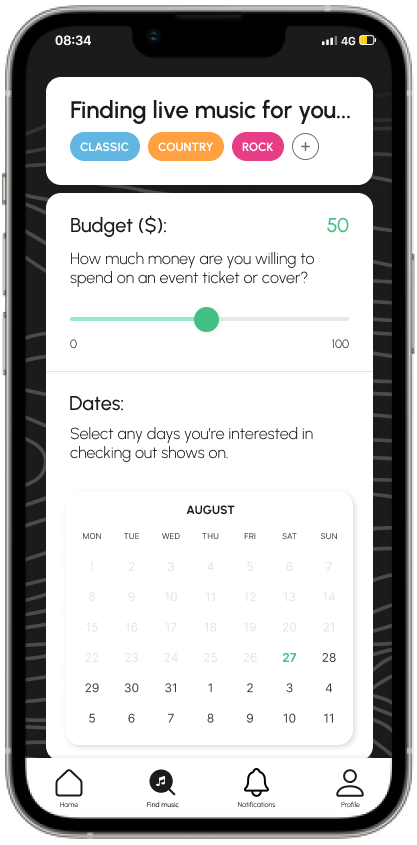
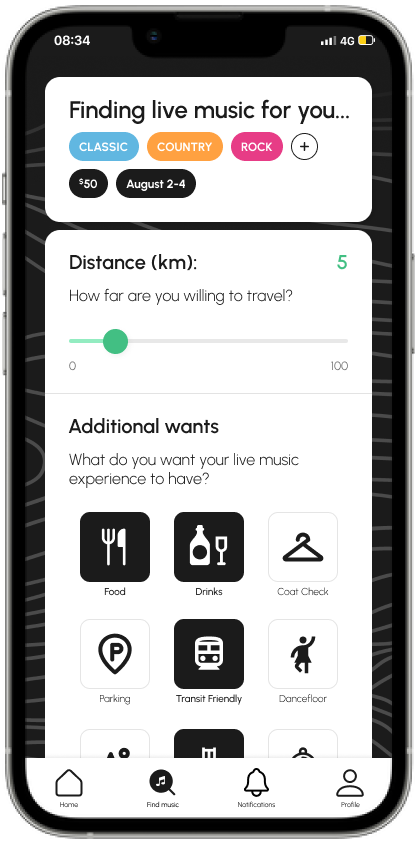

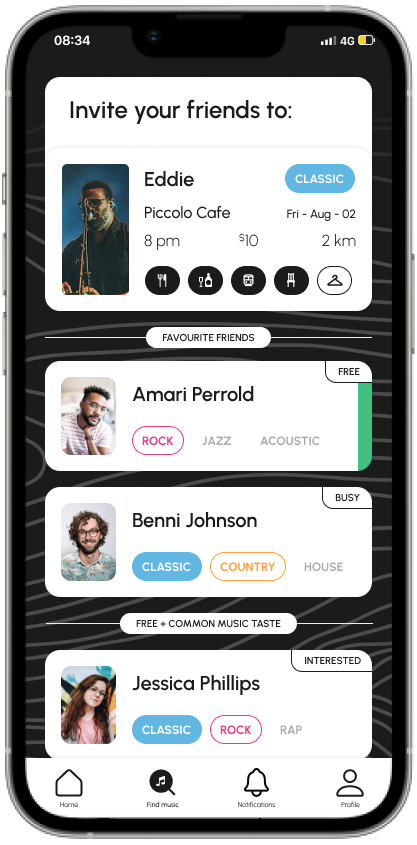
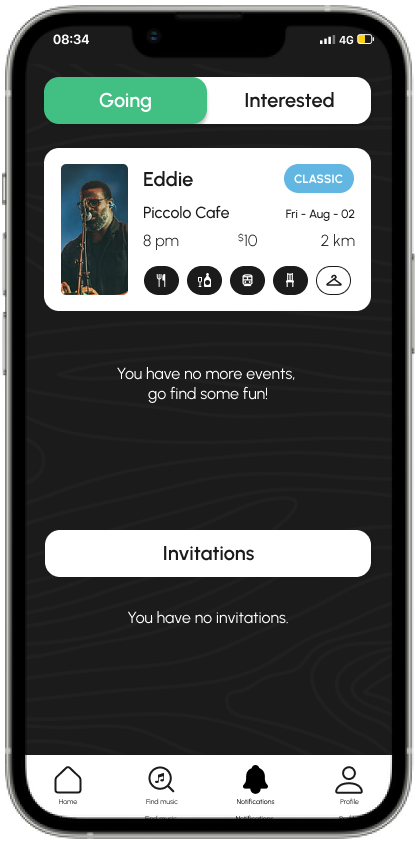
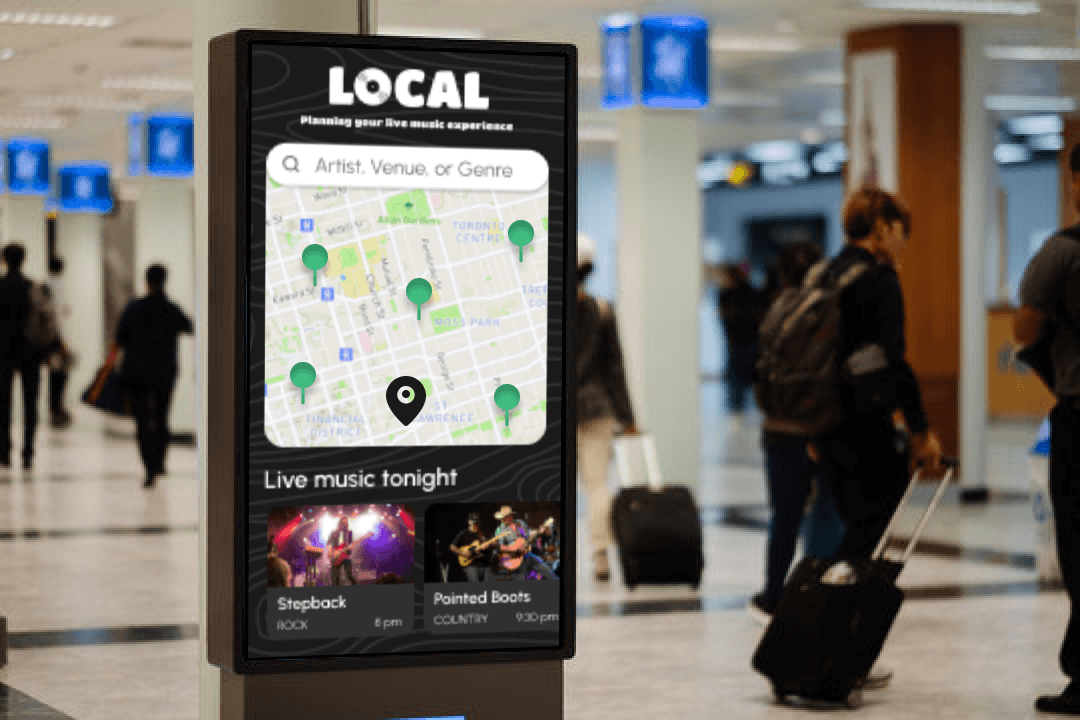
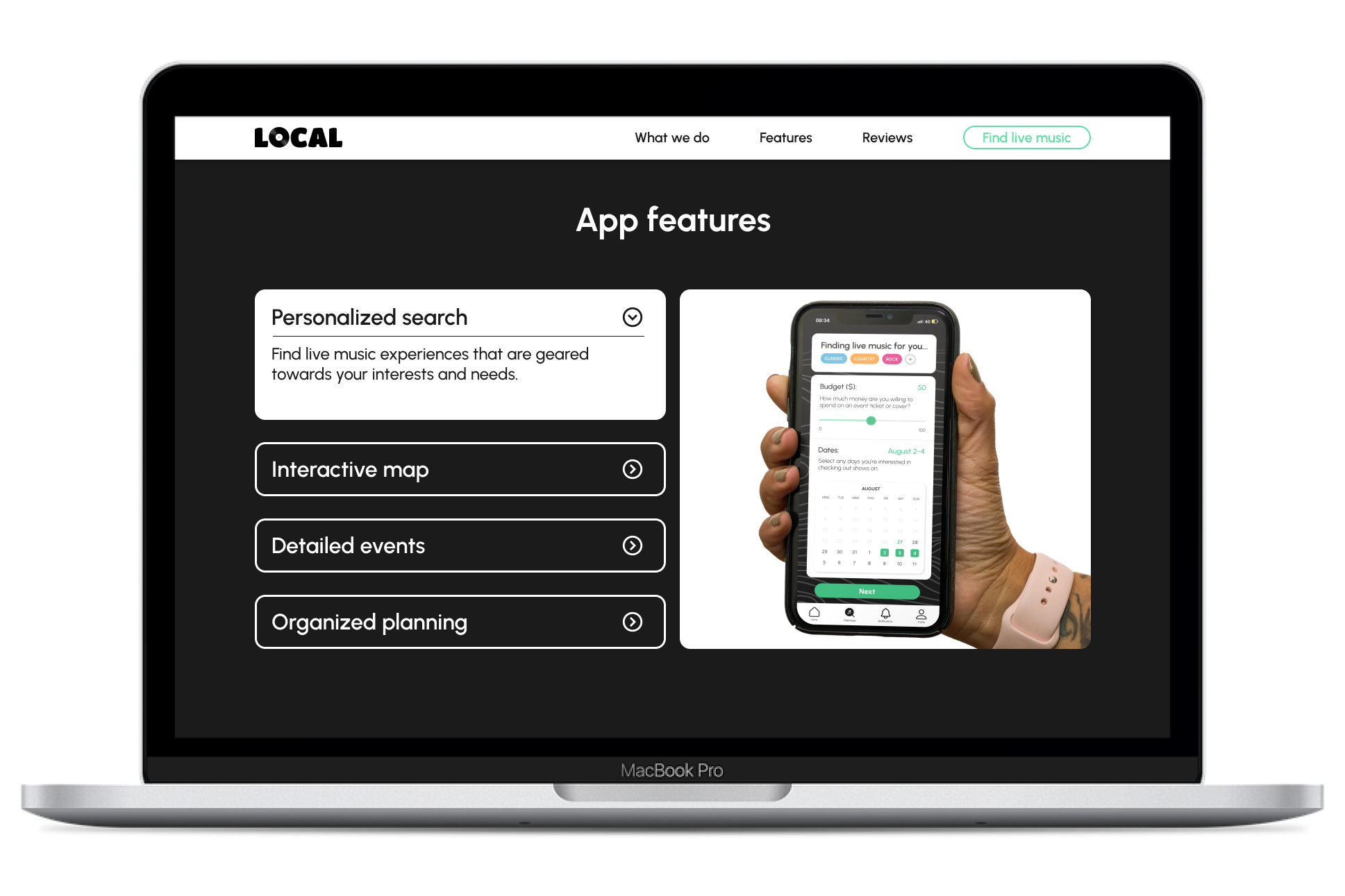
Obtaining data was a challenge. I initially relied on secondary research to identify a problem space, but primary research (interviews) provided the authentic insights needed to solve a real problem. Having your OWN data is crucial!
Strict timelines forced me to deliver value by prioritizing work and leveraging feedback to grow. Collaboration, feedback and reflection helped me grow quickly!
Creativity is special, but it can become stressful if not organized properly. Naming conventions and logic were two aspects of my Interface Library that I learned to do right from the start. A strong and organized foundation saves time!